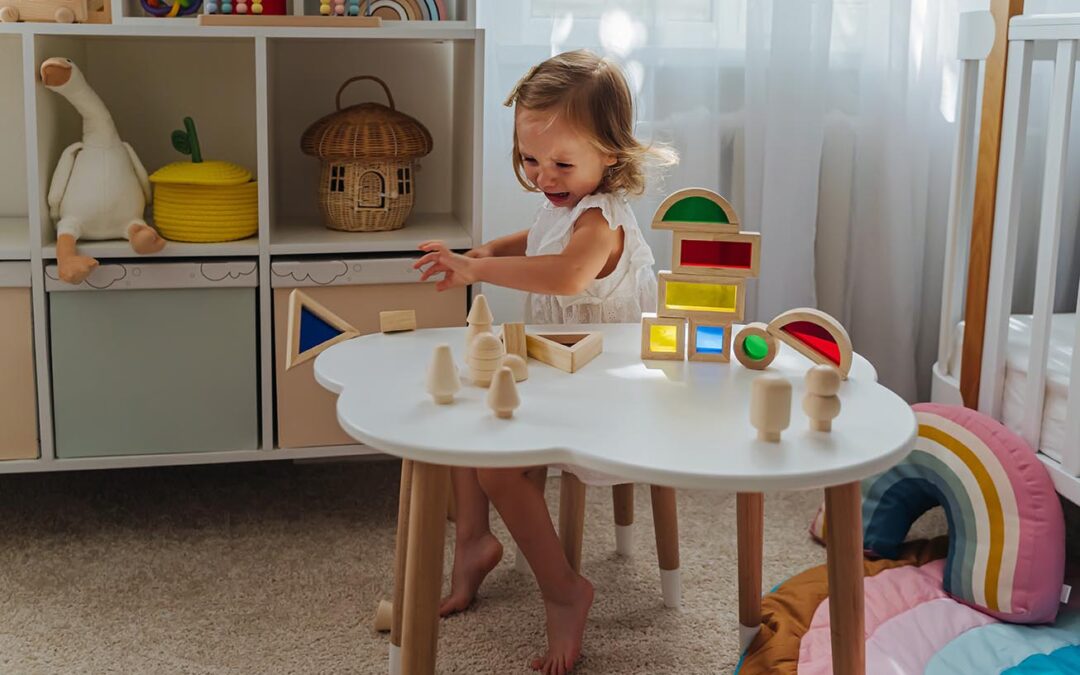Cross-posted from Macaroni Kid – Frederick
By Megan Donovan, Owner + Operator
The holidays are upon us, bringing lots of magic, fun events and new experiences. Whether it’s something entirely new or somewhere your children have been a million times before, it’s no one’s idea of a good time when saying “time to go” ushers in an epic meltdown.
At SHIFT Work + Play, our members enjoy dedicated work time while their children are safe and having fun in our Montessori-inspired playroom. After several hours of imaginative play supported by our caring and fun staff, sometimes one of our playroom guests has a hard time leaving. We take that as a compliment! But it’s also our goal to support our members and their little ones as they say goodbye and transition to the next phase of their day.
Based on our experience, here are the most important steps you can take to support your children when saying goodbye proves challenging:
Step 1: Take a Deep Breath
When any meltdown begins, the most important thing you can do for your child is to check in with yourself and regulate your own emotions. When your child cries, yells or otherwise acts out, it can be triggering and bring up feelings of frustration or embarrassment. Your child will learn from how you handle your own emotions in this moment. The best thing you can do is model a calming strategy and move on to step 2.
Step 2: Validate the Feelings
Leaving a fun situation is difficult. We all struggle with this. Now imagine it from your child’s perspective. They’ve been having a great time! They don’t want it to end. This is all the more challenging if any number of complicating factors are thrown in. Are they tired? Hungry? Did they miss a nap? Remembering these details will help you empathize with your child.
Saying something like “I know, leaving feels difficult, plus you’re tired and hungry” helps your child understand what’s going on. It models the skills they need to identify their own feelings and gives them a moment to hear your calm voice and observe your coping strategies. Over time, they’ll start using the same techniques.
Step 3: Offer Comfort
This goes hand in hand with step 2. Show your little one some love. It could be a hug, a kind word, or a smile. Something that demonstrates they are loved even when they are having a hard time, and you are there to support them. This builds confidence, self-love and the foundation they need to regulate their own emotions. It also builds the trust you need for them to work with you on the next step.
Step 4: Provide an Opportunity
Now that you’ve laid the foundation, it’s time to be firm about what needs to happen. Remain calm, explain that you understand their feelings, and reiterate that it’s time to leave. Let them know that they can walk out the door with you or you will help them. This isn’t about punishment or shame. It’s about what needs to happen next.
Step 5: Follow Through
If your child needs extra help, go ahead and carry them. Again, this isn’t about punishment or shame. It’s also not a time for negotiation, pleading, threats, or bribes. They are allowed to have their feelings and, right now, those feelings might be overwhelming. But you are also allowed to move on with your day. No one has failed if you help your child to the car. You have supported your child while also being firm with your expectations and boundaries. Over time, with your support, their emotional regulation skills will improve and these moments will become easier.
Conclusion
Try out these steps next time your child has a hard time leaving a fun situation. They work best the more consistently you use them, so remember that you are laying a foundation for improved outcomes. Of course, you’re always welcome to come practice at SHIFT. We’d be happy to help!

